作者:vivo 互联网数据库团队- Qiu Xinbo
本文主要通过图示介绍了用主键进行分片查询的过程,介绍了主键分页查询存在 SQL 性能问题,如何去创建高效的索引去优化主键分页查询的 SQL 性能问题。
对于数据分布不均如何发现,提供了一些 SQL 查询案例来进行参考,对 MySQL Index Condition Pushdown 优化算法做了一些简单介绍。
一、背景介绍
最近在线上环境发现了一条执行较慢的分页查询,高并发执行,产生了大量的慢查询日志,CPU 使用率逐步升高。
通过观察它的执行时间,发现该 SQL 查询时快时慢,执行时间并不稳定,以至于在高并发执行场景时,数据库来不及响应,数据库服务变慢。
二、分析定位
2.1 定位 SQL 执行变慢的原因
通过数据库管理平台查看 SQL 执行信息发现,SQL 解析行数(扫描行数)和 SQL 执行时间都很不稳定,执行时长和解析行数(扫描行数)是成正比的。
这个也能解释的通为什么 SQL 执行时长变了,因为扫描行数变多了,SQL 执行时间成比例增长。
-- SQL全文select id, uuid, name, user_type, is_deleted, modify_datefrom test_userwhere is_deleted=0 and user_type=0 and id > 10000 and id % 10 = 9order by id limit 500;
复制代码
2.2 了解 SQL 的业务背景
通过与研发沟通发现,该 SQL 原来是串行执行,单个线程在跑,后来觉得比较慢,改为分布式任务并行执行,通过 id 取模 0-9,调度 10 个线程,每个线程处理 1 个分区,这样就有 10 个并发相当于把数据做了切片,并发查询并发处理,由此带来数据库端的并发升高。从技术角度上看,提高数据处理速度,给数据做切片,改单线程为并发处理,并没有任何问题,反而是一种比较好的优化方案,但是高并发执行的 SQL 都是要有一个前提,SQL 执行效率要特别高,否则会导致数据库端物理机资源耗尽,数据库服务来不及响应。
2.3 定位 SQL 扫描行数变化的原因
2.3.1 慢 SQL 及表结构信息
-- 为了方便理解和说明,新建一个test_user表,造了一些模拟数据,将SQL做了一些简化,不影响整体的分析效果 -- SQL全文select id, uuid, name, user_type, is_deleted, modify_datefrom test_user where is_deleted=0 and user_type=0 and id > 10000 and id % 10 = 9 order by id limit 500; -- 表信息 CREATE TABLE `test_user` ( `id` bigint(20) NOT NULL AUTO_INCREMENT COMMENT '主键', `uuid` varchar(64) NOT NULL COMMENT '用户ID', `name` varchar(20) DEFAULT '' COMMENT '用户名', `user_type` tinyint(4) NOT NULL DEFAULT '0', `is_deleted` tinyint(4) NOT NULL DEFAULT '0', `modify_date` datetime NOT NULL DEFAULT CURRENT_TIMESTAMP ON UPDATE CURRENT_TIMESTAMP COMMENT '修改时间', `create_date` datetime DEFAULT CURRENT_TIMESTAMP COMMENT '创建时间', PRIMARY KEY (`id`), UNIQUE KEY `uniq_uuid` (`uuid`), KEY `idx_modifydate` (`modify_date`)) ENGINE=InnoDB AUTO_INCREMENT=7986024 DEFAULT CHARSET=utf8mb4
复制代码
2.3.2 查看 SQL 执行计划
通过查看 SQL 执行计划,发现执行计划走主键索引扫描,以下是 SQL 执行计划的关键信息解读:
mysql> explain select -> id, -> uuid, -> name, -> user_type, -> is_deleted, -> modify_date -> from -> test_user -> where -> is_deleted=0 -> and user_type=9 -> and id > 10000 -> and id % 10 = 9 -> order by -> id limit 500; +----+-------------+-----------+------------+-------+---------------+---------+---------+------+---------+----------+-------------+| id | select_type | table | partitions | type | possible_keys | key | key_len | ref | rows | filtered | Extra |+----+-------------+-----------+------------+-------+---------------+---------+---------+------+---------+----------+-------------+| 1 | SIMPLE | test_user | NULL | range | PRIMARY | PRIMARY | 8 | NULL | 8775507 | 1.00 | Using where |+----+-------------+-----------+------------+-------+---------------+---------+---------+------+---------+----------+-------------+1 row in set, 1 warning (0.00 sec)
复制代码
2.3.3 图示 SQL 执行过程
通过简单的图示,描述下 SQL 扫描过程,由于是通过主键索引遍历,避免了额外的排序行为,从最小 id 开始取到最大 id。
mysql> select min(id),max(id) from test_user;+---------+----------+| min(id) | max(id) |+---------+----------+| 3 | 17889149 |+---------+----------+1 row in set (0.00 sec)
复制代码
2.3.4 计算数据分布
从 SQL 过滤条件看只有 is_deleted、user_type、id 这三个,能预估到 is_deleted 和 user_type 区分度不高,通过 SQL 查看下数据的分布。
mysql> select is_deleted,user_type,count(*) from test_user group by is_deleted,user_type order by count(*) desc limit 1,10;+------------+-----------+----------+| is_deleted | user_type | count(*) |+------------+-----------+----------+| 1 | 1 | 4473019 || 1 | 0 | 4471648 || 0 | 0 | 4470140 || 0 | 2 | 999 |+------------+-----------+----------+4 rows in set (4.81 sec)-- 从数据分布来看user_type等于2的数据较少,只有999条,其他相对比较均匀
复制代码
将上述 4 种结果(is_deleted 和 user_type)分别通过 SQL 查看最近 1000 条满足条件的数据的 id 区间,验证数据的分布。
is_deleted=1、user_type=1
is_deleted=1、user_type=0
is_deleted=0、user_type=0
-- 最近1000条is_deleted=1、user_type=1的数据记录分布在id 6-3876,大约扫描3871条数据,能返回500条满足条件的值,数据分布均匀.mysql> select max(id),min(id) from( select id from test_user where is_deleted=1 and user_type=1 order by id limit 1000) a;+---------+---------+| max(id) | min(id) |+---------+---------+| 3876 | 6 |+---------+---------+1 row in set (0.00 sec) -- 最近1000条is_deleted=1、user_type=0的数据记录分布在id 3-4019,大约扫描4016条数据,能返回500条满足条件的值,数据分布均匀.mysql> select max(id),min(id) from( select id from test_user where is_deleted=1 and user_type=0 order by id limit 1000) a;+---------+---------+| max(id) | min(id) |+---------+---------+| 4019 | 3 |+---------+---------+1 row in set (0.00 sec) -- 最近1000条is_deleted=0、user_type=0的数据记录分布在id 5-4020,大约扫描4015条数据,能返回500条满足条件的值,数据分布均匀.mysql> select max(id),min(id) from( select id from test_user where is_deleted=0 and user_type=0 order by id limit 1000) a;+---------+---------+| max(id) | min(id) |+---------+---------+| 4025 | 5 |+---------+---------+1 row in set (0.00 sec)
复制代码
-- 最近1000条is_deleted=0、user_type=2的数据记录分布在id 17890648-17891147,是比较紧凑的,但是由于id比较大,整体排在较后的位置。-- 如果按照主键遍历,需要遍历完前面的1700w条不符合条件数据,才能遍历到满足条件的数据。mysql> select max(id),min(id) from( select id from test_user where is_deleted=0 and user_type=2 order by id limit 1000) a;+----------+----------+| max(id) | min(id) |+----------+----------+| 17891147 | 17890149 |+----------+----------+1 row in set (0.00 sec)
复制代码
2.3.5 实际执行测试
重要字段信息说明:
Query_time:SQL 执行时间
Rows_examined:SQL 扫描行数
Rows_sent:SQL 返回行数
# Query_time: 0.012232 Lock_time: 0.000076 Rows_sent: 500 Rows_examined: 19507
SET timestamp=1695711685;
select id,uuid,name,user_type,is_deleted,modify_date from test_user where is_deleted=1 and user_type=1 and id > 0 and id % 10 = 9 order by id limit 500;
复制代码
# Query_time: 0.009549 Lock_time: 0.000074 Rows_sent: 500 Rows_examined: 20537
SET timestamp=1695711745;
select id,uuid,name,user_type,is_deleted,modify_date from test_user where is_deleted=1 and user_type=0 and id > 0 and id % 10 = 9 order by id limit 500;
复制代码
# Query_time: 0.009835 Lock_time: 0.000081 Rows_sent: 500 Rows_examined: 21037
SET timestamp=1695711779;
select id,uuid,name,user_type,is_deleted,modify_date from test_user where is_deleted=0 and user_type=0 and id > 0 and id % 10 = 9 order by id limit 500;
复制代码
(这边大家可能会有疑惑,为什么扫描行数要比预估的多一些,其实也正常,我们在做预估时并没有把取模的过滤条件加上,所以必然会多扫描)
# Query_time: 6.981938 Lock_time: 0.000076 Rows_sent: 100 Rows_examined: 17890145
SET timestamp=1695711818;
select id,uuid,name,user_type,is_deleted,modify_date from test_user where is_deleted=0 and user_type=2 and id > 0 and id % 10 = 9 order by id limit 500;
复制代码
2.3.6 自此能得到结论
因为 is_deleted 和 user_type 数据分布不均匀并且数据区分度不高,执行计划走主键顺序扫描, 在查询 is_deleted=0 and user_type=2 特定场景的时,因为走主键索引顺序遍历,满足 user_type=2 的 id 比较靠后,需要先扫描完成前面 1700w 条数据后,才能找到满足 user_type=2 的数据,SQL 扫描行数变多, SQL 执行时间变长。
三、优化方案
3.1 优化方案确定
当前 SQL 执行计划以主键进行顺序遍历,是一个范围扫描,有点像在一片很大的居民区按照序号挨家挨户寻找一些特定的人一样,比较简单也比较低效。
既然查询是以 is_deleted 和 user_type 为主要的过滤条件,查询特定的人群信息,可以考虑直接在这两列上添加索引,记录特定人群信息的位置,根据位置直接去定向寻找。
虽然 is_deleted 和 user_type 字段区分度很低,但是成为有序结构,能避免这条 SQL 大量的读取不符合条件的数据的行为,添加索引的收益远大于索引带来负面影响。
最终的添加的索引:
alter table test_user add index idx_isdeleted_usertype_id(is_deleted,user_type,id);
复制代码
添加该索引的考虑:遵循 ESR 原则(等值在前,排序在中间,范围在最后),既能高效扫描到对应的数据,还能避免 id 的排序,extra 内显示使用了 Using index condition。
mysql> explain select id,uuid,name,user_type,is_deleted,modify_date from test_user where is_deleted=0 and user_type=2 and id > 0 and id % 10 = 9 order by id limit 500;+----+-------------+-----------+------------+-------+-----------------------------------+---------------------------+---------+------+------+----------+-----------------------+| id | select_type | table | partitions | type | possible_keys | key | key_len | ref | rows | filtered | Extra |+----+-------------+-----------+------------+-------+-----------------------------------+---------------------------+---------+------+------+----------+-----------------------+| 1 | SIMPLE | test_user | NULL | range | PRIMARY,idx_isdeleted_usertype_id | idx_isdeleted_usertype_id | 10 | NULL | 999 | 100.00 | Using index condition |+----+-------------+-----------+------------+-------+-----------------------------------+---------------------------+---------+------+------+----------+-----------------------+1 row in set, 1 warning (0.00 sec)
复制代码
3.2 优化效果对比
# Query_time: 6.981938 Lock_time: 0.000076 Rows_sent: 100 Rows_examined: 17890145SET timestamp=1695711818;select id,uuid,name,user_type,is_deleted,modify_date from test_user where is_deleted=0 and user_type=2 and id > 0 and id % 10 = 9 order by id limit 500;
复制代码
# Query_time: 0.000884 Lock_time: 0.000091 Rows_sent: 100 Rows_examined: 100SET timestamp=1695714485;select id,uuid,name,user_type,is_deleted,modify_date from test_user where is_deleted=0 and user_type=2 and id > 0 and id % 10 = 9 order by id limit 500;
复制代码
扫描行数从 1700w 条降低为 100 条,查询时间从 6.98s 降低为 0.8ms。
3.3 图示的优化后的 SQL 执行过程
通过 idx_isdeleted_usertype_id 索引的有序性,进行二分查找,快速定位到满足 is_deleted 和 user_type、id 条件主键信息。
通过主键信息回表读取完整的数据。
返回数据给客户端服务。
3.4 ICP 特性(Index Condition Pushdown)
补充下执行计划内 extra 列体现 Using index condition 优化。
索引条件下推 (ICP) 是针对 MySQL 使用索引从表中检索行的情况的优化。
如果没有 ICP,存储引擎会遍历索引以定位基表中的行,并将它们返回给 MySQL server,由 MySQL server 评估行的 WHERE 条件。
在启用 ICP 的情况下,如果 WHERE 条件的一部分可以通过仅使用索引中的列来评估,MySQL server 会将这部分 WHERE 条件下推到存储引擎。
然后存储引擎通过使用索引条目来评估推送的索引条件,并且只有在满足这一条件时才从表中读取行。
ICP 可以减少存储引擎必须访问基表的次数和 MySQL server 必须访问存储引擎的次数。
ICP 优化在数据库优化器内默认是开启的,ICP 优化适用性取决于以下条件:
icp 对于使用 rang、ref、eq_ref 和 ref_or_null 访问模式去检索全表数据行时候。
icp 只适用于 innodb、myisam 引擎的表,包括分区的 InnoDB 和 MyISAM 表。
icp 只会使用二级索引,减少完整行记录的读取和减少 I/O 操作 对于聚集索引,完整行记录已经被读入 innodb buffer 中,using icp 不能减少 I/O 操作。
icp 不支持使用创建在虚拟列上的二级索引,innodb 引擎支持在虚拟列上创建二级索引。
引用子查询的条件无法下推。
引用存储函数的条件无法下推。存储引擎无法调用存储的函数。
Triggered conditions cannot be pushed down。
-- 测试下相同的SQL执行在开启ICP优化和关闭ICP优化,执行时间和扫描行数的对比. -- 关闭ICP,SQL执行扫描行数是5043行,执行时间为8.03ms.SET optimizer_switch='index_condition_pushdown=off';# Query_time: 0.008031 Lock_time: 0.000085 Rows_sent: 500 Rows_examined: 5043select id,uuid,name,user_type,is_deleted,modify_date from test_user where is_deleted=0 and user_type=0 and id > 10000 and id % 10 = 9 order by id limit 500; -- 开启ICP,SQL执行扫描行数仅为500行,执行时间为2.72ms.SET optimizer_switch='index_condition_pushdown=on';# Query_time: 0.002724 Lock_time: 0.000082 Rows_sent: 500 Rows_examined: 500select id,uuid, name, user_type,is_deleted,modify_date from test_user where is_deleted=0 and user_type=0 and id > 10000 and id % 10 = 9 order by id limit 500;
复制代码
结论:本次测试,开启 ICP 优化,SQL 执行时扫描的行数仅为未开启时的 1/10,执行时间提升约 2-3 倍。
四、总结
将 SQL 查询从串行改为高并发执行,需要评估下 SQL 查询效率是否足够高,评估的标准:SQL 扫描行数/SQL 返回行数 结果越大说明存在很多低效的数据扫描,执行效率不高。
分页查询通过主键遍历是顺序遍历,从最小 id 到最大 id,当存在其它过滤条件时,需要再次判断数据是否满足这些过滤条件,扫描的行数会随着增长。
区分度较低的字段并非不适合创建索引,仔细评估查询的场景,建立特定的组合索引,触发 MySQL icp 优化,对查询性能会有很大提升。
参考文章
Index Condition Pushdown 介绍:
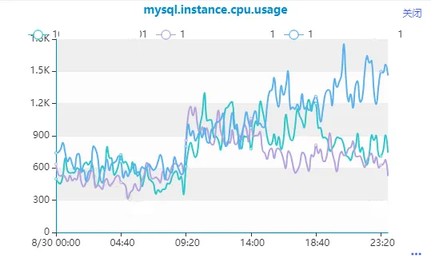
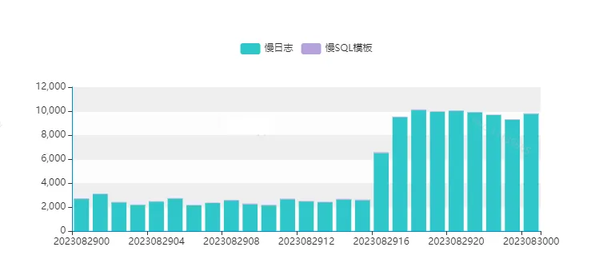
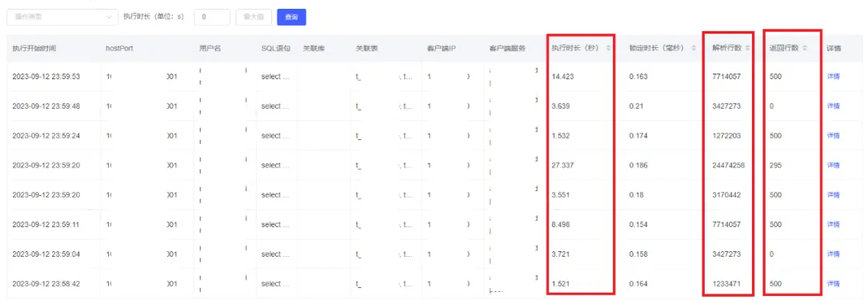
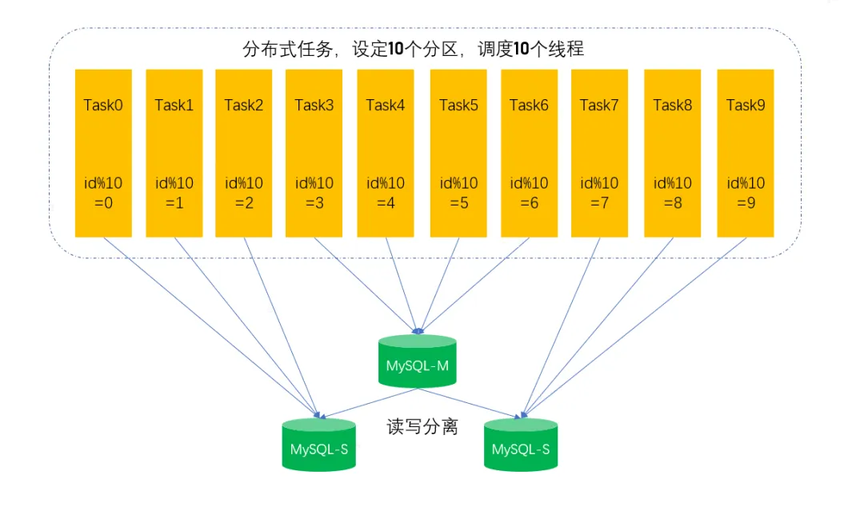
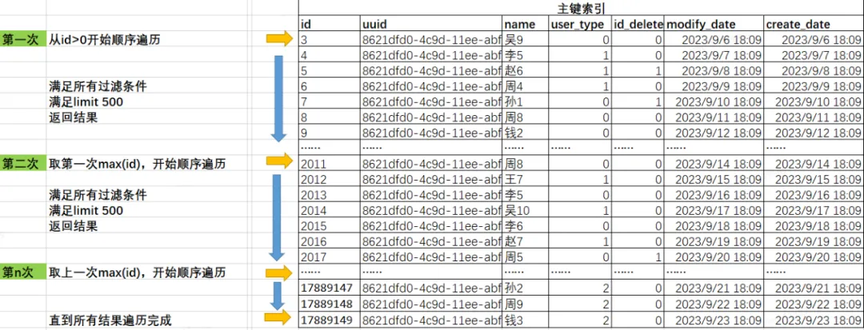
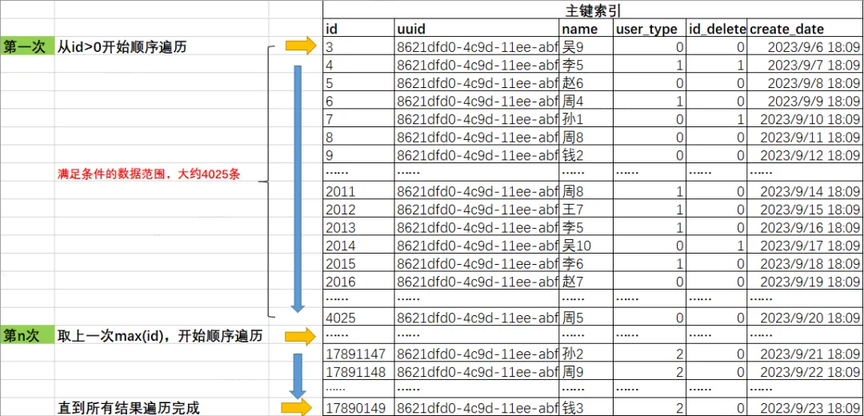
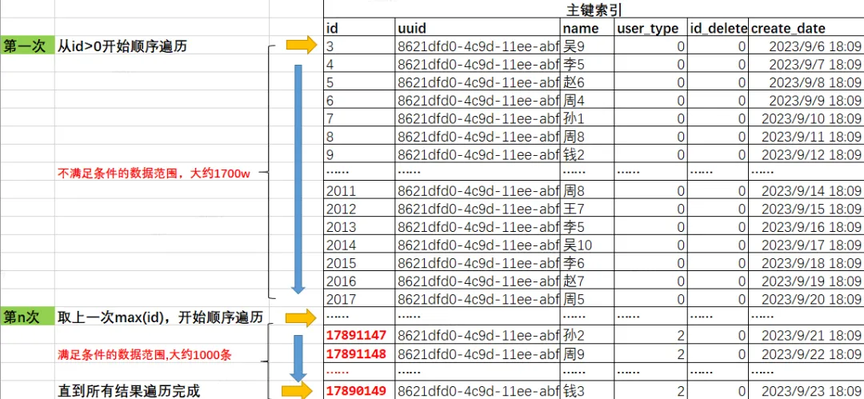
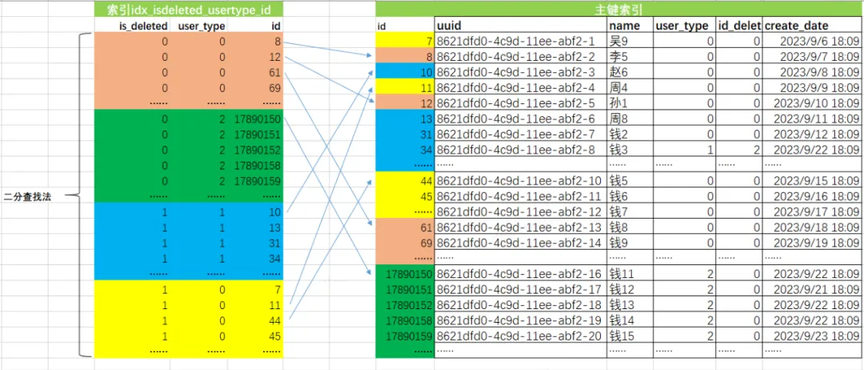









评论